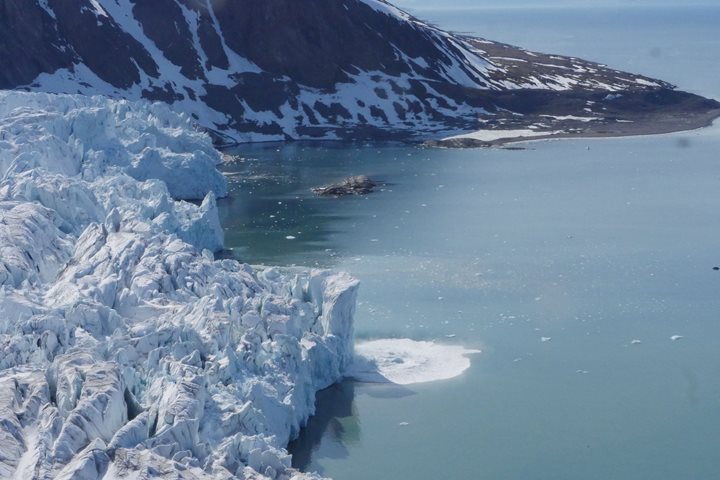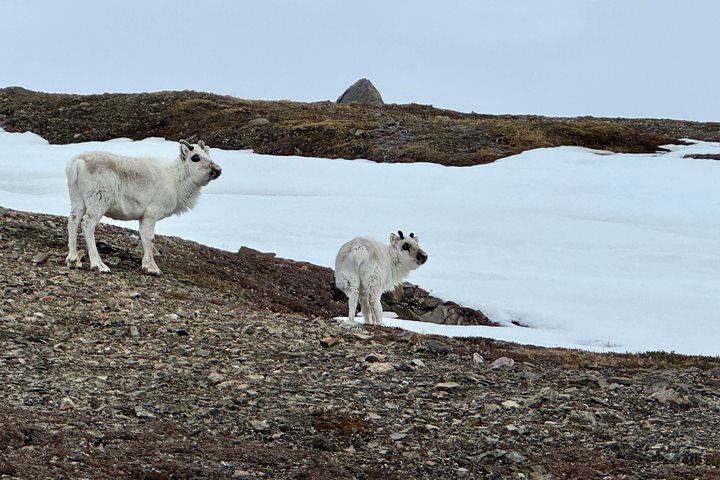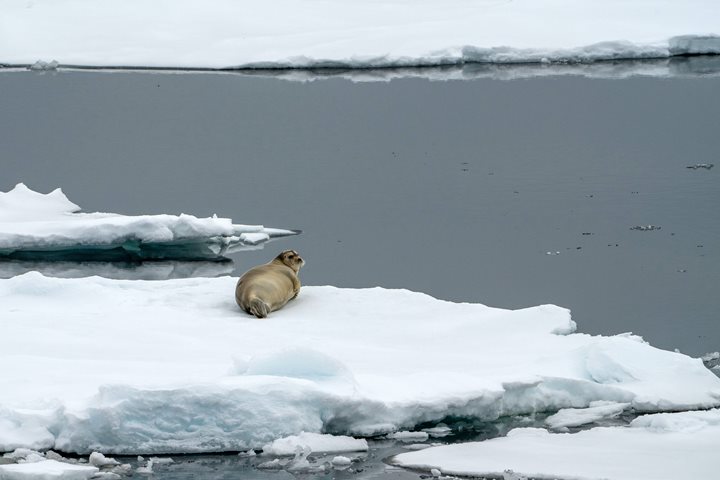Hinlopen Strait
Midnight snow in driving wind and intimate fog. The ship moves through a portion of Hinlopen Strait, which runs about 110 miles northwest to southeast.
On the morning deck, the hardier souls look upward at one of Svalbard’s largest concentrations of nesting seabirds. Here, at Kapp Fanshawe on the high cliffs of Alkefjellet, the sheer walls of dolerite are alive. The climate is high Arctic, snow turning to sleet, ice forming on the beard of the Zodiac driver.
At Torelneset we hike across gravel and tundra and the sky grows larger. The island and sky and water are so broad and grey that our eyes lose perspective. Here, giant features can seem small; the tiniest flowers, Arctic buttercups, loom large. Lindblad naturalist Elise Lockton points to the bones of whales and walruses, remnants of past lives having ridden rock upward for tens of thousands of years. The ancient past seems casually present. Time and distance defy quantification on this island. The naturalists tell us that the Arctic tern can, in its lifetime, travel 1.5 million miles. Right now, it dive-bombs the hikers when they unknowingly walk too close to its hidden nest.
Now on the shoreline we see 60 or so walruses “like heaps of hogs,” as Ian Bullock puts it – quoting some long-ago observer. The walrus can travel 1,500 miles or more; it can break ice 8 inches thick. And consider this: the Inuit people use 47 names for the walrus, depending on what the walrus is up to, and yet the Inuit have no name for time. Ian tells us this in his lecture.
But back to the travelers. Some of them, huddled in the freezing spray, suddenly meet several walruses – just feet away – that heave into the air, gyrate in the waves. Seemingly inquisitive, they watch the watchers, then disappear.
This encounter reminds us of our kinship with other creatures and with each other. But a more humbling moment comes later, in the form of that most peculiar substance, the only element that weighs less as a solid than as liquid, that essence that fills seven-tenths of our bodies, making all of us ocean. We pass into Videbukta, breaking land-fast ice, to reach Bråsvellsbreen, the ice cap of Nordaustlandet. The great white, frozen thing with veins of blue looms over the bow of the ship. From its high ridge, from the beginning of time, rivers of northern water shoot out and down.






